Introduction: The Final Frontier Awaits
All great discoveries are made by those whose feelings lie outside the boundaries of accepted norms. — Ali A. Mazrui. This thought-provoking quote shines a light on our daring pursuit of the impossible. Our quest for understanding the universe stretches beyond current beliefs and into realms unimagined.
Imagine transforming the vast expanse of space into a cosmic superhighway where zipping to distant stars in the blink of an eye is feasible. Albert Einstein, with his groundbreaking theory of relativity, asserted that nothing can travel faster than the speed of light. Does this immortal rule represent the final chapter in our cosmic story, or merely the opening words of a new saga? Can the miracle of AI carve new paths into the mysteries that defy our understanding?
In this exploration, authors like Michio Kaku, Kip Thorne, and Carl Sagan have opened our imaginations to FTL possibilities. Through the prism of AI’s growing prowess in data analysis and pattern detection, might we unearth astonishing physics that bend even the most rigid laws of nature? The potential for radical breakthroughs that allow us to traverse starlit realms may be closer than we think.
The Current Understanding of Light Speed Limitations
Einstein's theory of relativity stands as a cornerstone of modern physics, positioning the speed of light as an unbreakable barrier. Known for its dictum that, as objects accelerate toward light speed, their mass approaches infinity, making it necessary to use infinite energy to reach or surpass this limit. It's a principle as stubborn as a mule in a rainstorm.
Quantum Entanglement: A Glimpse Beyond
Quantum entanglement, a mind-boggling notion where particles can connect regardless of how far apart they are, teases us with possibilities. Could this amazing quirk of quantum physics whisper hints about shortcuts through light-speed constraints? Imagining particles playing a cosmic game of tag, effortlessly transcending space, makes our heads spin with wild possibilities.
Wormholes and Theoretical Constructs
Enter the whimsical theories of wormholes and warp drives—concepts proposed by curious minds in the heart of theoretical physics. These ideas suggest bending and twisting the very fabric of spacetime itself. It's a bit like rolling a piece of paper to bring two points together—a fantastical cheat sheet against the light-speed limit. If this doesn’t tickle your imagination, what will?
The Role of AI in Physics Research
Artificial intelligence is truly shaking up the universe—perhaps even faster than a quark on a caffeine rush. These clever algorithms are transforming how we tackle thorny problems in physics. Gone are the days when a researcher with wild hair and a chalkboard full of equations was our best hope. Now, we've got machines that can process data faster than a barista can whip up your triple-shot espresso.
Machine Learning Algorithms in Physics
Imagine having a Swiss Army knife for research. That's what machine learning is, spotting insights that might otherwise be as elusive as a parking spot in downtown San Francisco. By sifting through cosmic amounts of data, these algorithms find patterns even a sci-fi nerd with a PhD might miss. This capability is crucial as we toy with concepts of faster-than-light travel and beyond.
AI's Ability to Test Theories Rapidly
Forget waiting around for theory testing as if it's a season finale. AI is the hyperdrive that lets us simulate ideas faster than a celebrity gossip tweet goes viral. By modeling constructs like warp drives or space-shifting geometries, AI accelerates the pace at which we can test—and perhaps one day disentangle—the elegant web of theoretical physics.
Historical Attempts at FTL Theories
If history has taught us anything, it's that rules are made to be broken—or at least questioned. Through time, brainiacs have proposed theories that flirt with scandalous speeds, daring to challenge Einstein while giving us physicists all a run for their money.
Alcubierre Drive: A Bold Proposition
Picture carving a path through space that allows you to skip the speed limit entirely—a cosmic loophole, if you will. That's the Alcubierre Drive in a nutshell, brainchild of physicist Miguel Alcubierre. By wrapping a ship in a "warp bubble," it could theoretically zoom through space at FTL speeds without upsetting that finicky fabric of relativity.
Tachyons: The Hypothetical Particles
Meet the tachyons: particles that don't just meet the speed of light—they laugh in its face. These hypothetical daredevils zoom faster than light, prompting discussions that bend the mind like a soft pretzel. Yet, just like sci-fi or conspiracy theories, the idea of tachyons opens up peculiar debates about causality and the basics of our universe.
Challenges to Overcome for FTL Travel
The dream of faster-than-light travel has ignited imaginations, yet it is peppered with compelling challenges. These hurdles stand tall in the path of transforming science fiction into reality, ranging from energy consumption to untamed physics. On this exploration, hold fast to your seat—here, history meets the untamed enthusiasm of groundbreaking ideas. Let's dive in!
Energy Requirements: The Infinite Dilemma
Imagine launching a spaceship and realizing its engine demands an entire galaxy’s worth of energy! Theoretical constructs, like warp drives, often necessitate colossal energy outputs that are unimaginable with current technology. Even nature’s most potent reactors, such as the sun, pale in comparison to the requirements posited by scientists. Could artificial intelligence (AI) be the key to optimizing these energy demands?
To put it in perspective, let's see how energy distributions for different scenarios compare:
| Energy Source | Energy Output (joules) | Possible FTL Application |
|---|---|---|
| Typical Nuclear Reactor | ~1015 | Not feasible |
| Entire Earth's Resources | ~1023 | Still insufficient |
| Potential Future AI Optimization | Significantly enhanced efficiency | Possibly feasible |
Risks of Unknown Physics
The phrase "treading into the unknown" aptly describes venturing into physics beyond established knowledge. From causality paradoxes to tearing the very fabric of spacetime, the hazards could be chilling. Confirming the safety protocols—a task AI might bolster—is pivotal. Consider the risks:
- Spacetime Anomalies: Theoretical inconsistencies may lead to potentially catastrophic events.
- Mathematical Paradoxes: Conflicts in theories may upset foundational physics concepts.
- Ethical Concerns: Pushing boundaries entails moral and philosophical questions about our next steps.
As AI sifts through possibilities, the looming question remains: Could its relentless computations uncover safer avenues to explore?
The Future of AI and FTL Research
Picture the dawn of interstellar travel, marking a new epic in human history. As cutting-edge AI continues its exponential growth, drawing us closer to the stars, it promises transformative advancements. Here, we explore what may just await us in this enigmatic future of innovation.
Collaborative AI-Driven Research Initiatives
What if scientists and AI joined hands to develop futuristic solutions? By facilitating collaboration across disciplines, AI could spearhead breakthroughs where siloed research initiatives have faltered. For instance:
- Physicists: Push the boundaries of theoretical models while grounded in practical reality.
- AI Developers: Develop algorithms capable of dynamically learning from experimental results.
- Computing Infrastructure Engineers: Design systems that support intensive calculations crucial for AI-driven simulations.
By merging these fields, the synthesis could accelerate scientific progress beyond previous constraints, shaping the future of faster-than-light exploration.
Quantum Computing's Potential Contributions
Enter quantum computing, a wizard behind the electronic curtain capable of processing mind-bending calculations at speeds unfathomable by conventional computers. Quantum synergizes with AI, catalyzing progress in FTL pathways.
Anticipate these promising intersections:
- Complexity Cracking: Quantum processors tackle calculations necessary for simulating warped spacetime geometries.
- Parallel Problem Solving: Efficiently manage and assess numerous FTL theoretical models simultaneously.
- Unforeseen Discoveries: Enable in-depth explorations that unveil solutions hiding behind standard computational barriers.
With these undercurrents of innovation interweaving, the cosmic frontier might just morph into our cruising domain.
AI Solutions: How Would AI Tackle This Issue?
To unlock the enigma of faster-than-light (FTL) travel, artificial intelligence could deploy various innovative strategies. It’s as if we are handing the universe's most challenging puzzle to a super-intelligent assistant that has an endless supply of time and resources for the task.
Data Mining and Simulation
AI can meticulously analyze existing datasets, parsing through the chaos of quantum mechanics to identify correlations and anomalies that human researchers might miss. By simulating theoretical models, AI could explore their viability in real-time, unearthing nuggets of insight that propel research forward. Imagine a scenario where AI tools like TensorFlow conduct multifaceted simulations of warp drives, iterating on thousands of designs in a fraction of the time it would take any human team.
Collaborative Research Integrations
AI systems don’t have to operate in isolation. Establishing systems that collaborate with seasoned physicists and engineers might lead to enlightenment. Think of how AI could help build cross-disciplinary teams, gathering insights from experts in engineering, quantum physics, and computational science. This approach could accelerate innovation and push the boundaries of what's believed to be possible.
Iterative Hypothesis Testing
Utilizing machine learning, AI can quickly test and refine hypotheses based on countless trials. This ability to learn from failures will allow researchers to pivot and adapt theories seamlessly. Consider a team led by Caltech establishing an AI-driven lab dedicated to refining certain FTL hypotheses; their findings could redefine our understanding of physics as we know it.
Action Schedule/Roadmap
To achieve breakthroughs in FTL travel leveraging AI, a structured approach is necessary. Below is a proposed roadmap designed for any institution, organization, or government eager to explore the cosmos.
Day 1: Initiation of FTL-AI Research Initiative
A core team of physicists, computer scientists, and AI researchers should be formed. Invite notable names from institutions such as MIT, where AI research thrives. Establish clear goals such as exploring the feasibility of warp drives and quantum entanglement.
Day 3: Development of Research Framework
Outline protocols for seamless collaboration, data sharing, and resource allocation. Engaging ethics committees ensures compliance with AI research standards, safeguarding human values in high-stakes environments.
Week 1: Directive for Knowledge Gathering
Collect existing research on FTL travel and relevant AI applications in physics. A comprehensive literature review will empower the team with foundational knowledge.
Week 2: AI Simulation Tests Begin
Initiate preliminary simulations using AI-powered models on proposed FTL theories. The goal here is to gather baseline data and optimize the parameters for testing.
Week 3: Engage Broader Scientific Community
Organize online forums and discussions, inviting physicists worldwide. Use platforms like ResearchGate and social media for outreach to fuel the conversation.
Month 1: Data Analysis Phase
Review insights generated by AI simulations. Conduct a deep dive into findings, preparing to formulate comprehensive reports for stakeholders and drawing immediate attention to novel theories.
Month 3: Expansion into Practical Tests
Run practical experiments based on refined models. Initiate small-scale tests of theoretical concepts, utilizing established facilities like the CERN laboratories for particle physics.
Year 1: Documentation of Initial Findings
Summarize insights and discoveries in a preliminary scientific paper. Consider publishing it in a respected journal, such as Nature, inviting scrutiny and collaboration.
Year 1.5: Comprehensive Review and Future Planning
Evaluate successes and challenges, compiling data for peer feedback. A revamped approach should plan a path forward, directing research initiatives towards concrete outcomes in FTL travel.
Year 2: Interdisciplinary Collaboration
Expand the project to include experts from fields like bioengineering and energy systems. Bringing diverse perspectives could result in groundbreaking ideas for functional FTL technology. Host a global conference to share developments and foster international collaboration.
Conclusion: The Cosmic Odyssey Ahead
The journey toward faster-than-light travel transcends mere scientific inquiry; it is a quest that has captured humanity’s imagination for generations. Should we succeed, the implications could echo throughout time, enabling us to stretch our hands toward the stars within our lifetimes. AI emerges not just as a tool, but as a collaborative partner in this cosmic odyssey, challenging the boundaries of our understanding. We stand on the threshold of a new era—one where the dreams of our forefathers transform into tangible realities. Embracing AI in our search for FTL travel symbolizes a commitment to innovation, a willingness to defy the status quo, and a deep-seated hope for an expansive future. Whether through collaborative research, radical thinking, or a blend of both, the vision of traversing the great cosmic sea beckons alluringly. Are we ready to leap into the void and embrace the adventure that awaits?
FAQ
Q1: Is faster-than-light travel possible according to current physics?
A1: Right now, faster-than-light travel is considered impossible based on Einstein's theory of relativity. Einstein's theory tells us that as things go faster and closer to the speed of light, they gain mass and need more energy to move. However, scientists have dreamed up some interesting ideas, like warp drives and wormholes, which might give us some wiggle room to explore the idea of traveling faster than light.
Q2: How does AI contribute to scientific discoveries?
A2: Artificial Intelligence (AI) is like a super-smart tool for scientists. It can look at tons of information and help find patterns that humans might miss. AI can also run many simulations or tests quickly. Here's how AI is helping:
- Pattern Finding: AI finds connections in data that scientists are studying.
- Simulations: AI can create models to see how theories might work.
- Speed: AI can learn and refine ideas faster, helping science progress quicker than before.
Q3: What are tachyons?
A3: Tachyons are hypothetical particles that scientists have proposed might be able to travel faster than light. If tachyons exist, they could change how we understand motion and time. They raise cool questions about how things affect each other in our universe. You can read more about them here.
Q4: Can AI replace human scientists?
A4: While AI is super helpful, it can’t replace human scientists. Scientists use their creativity and intuition to think outside the box. AI helps with the heavy lifting of data, but human brains are still the ones making breakthrough discoveries.
Q5: What are the implications of FTL travel?
A5: If we could travel faster than light, it would change everything! Imagine being able to visit other stars or galaxies in a short time. Here are some exciting possibilities:
- Understanding the universe better and exploring new planets.
- Quick travel could allow communication across space without delays.
- It could lead to new discoveries about how we live and our place in the cosmos.
Q6: How is AI shaping the future of science?
A6: AI opens new doors for research and education in science. It’s a partner for scientists as they dream up the future. For example, AI can help predict complex systems like weather or how atoms interact. As MIT and other universities use AI for research, we could see many breakthroughs that change our world.
Q7: Will we ever travel to other planets?
A7: Currently, we can send rovers and spacecraft to explore our nearby planets, like Mars. As technology, including AI and rocket science, improves, reaching other planets in our solar system seems more promising. Companies like SpaceX are already working on missions that could take humans to Mars!
Q8: How does quantum computing fit into this discussion?
A8: Quantum computing is another exciting technology that can work alongside AI to explore complex problems in physics, like FTL travel. Quantum computers process information differently and much faster than traditional computers. This could pave the way for new discoveries we never thought possible. It's a game-changer!
Wait! There's more...check out our gripping short story that continues the journey: The stars are still out there, Lily
Disclaimer: This article may contain affiliate links. If you click on these links and make a purchase, we may receive a commission at no additional cost to you. Our recommendations and reviews are always independent and objective, aiming to provide you with the best information and resources.
Get Exclusive Stories, Photos, Art & Offers - Subscribe Today!
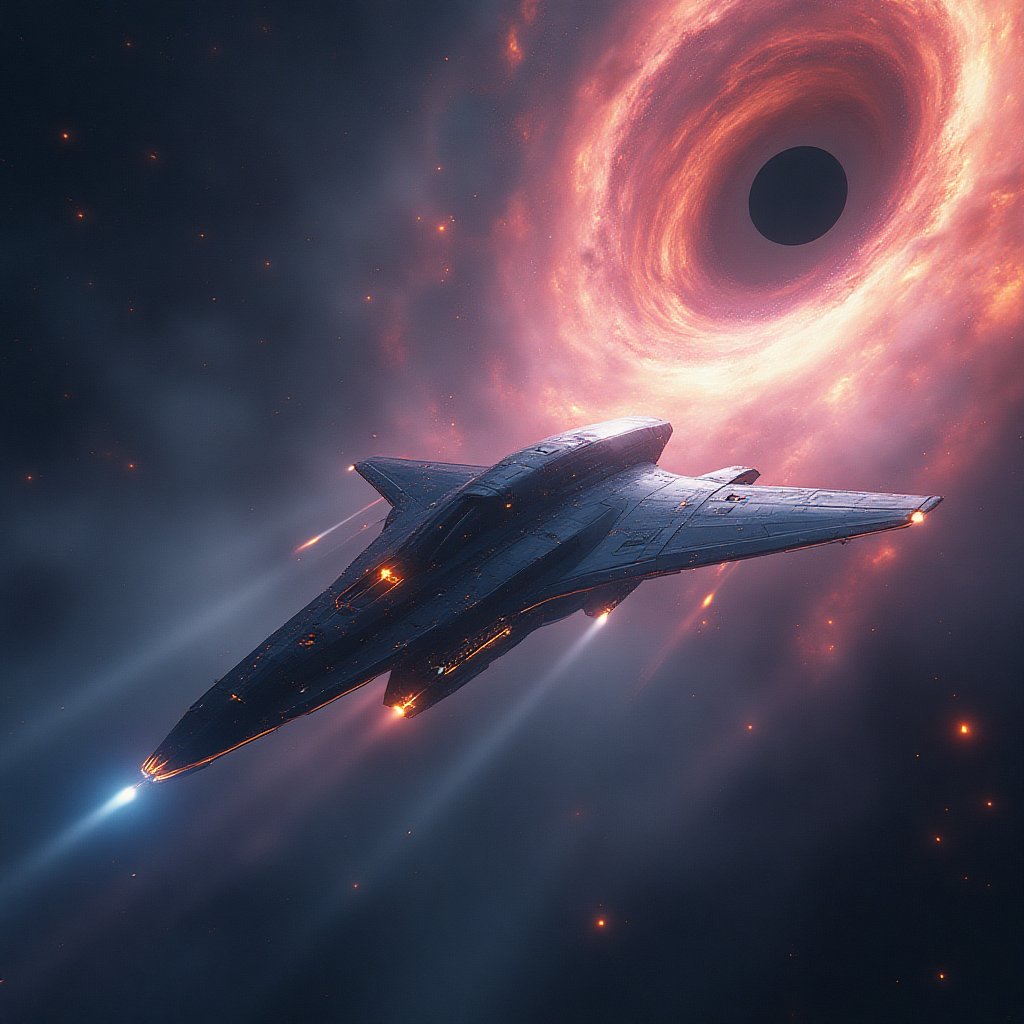
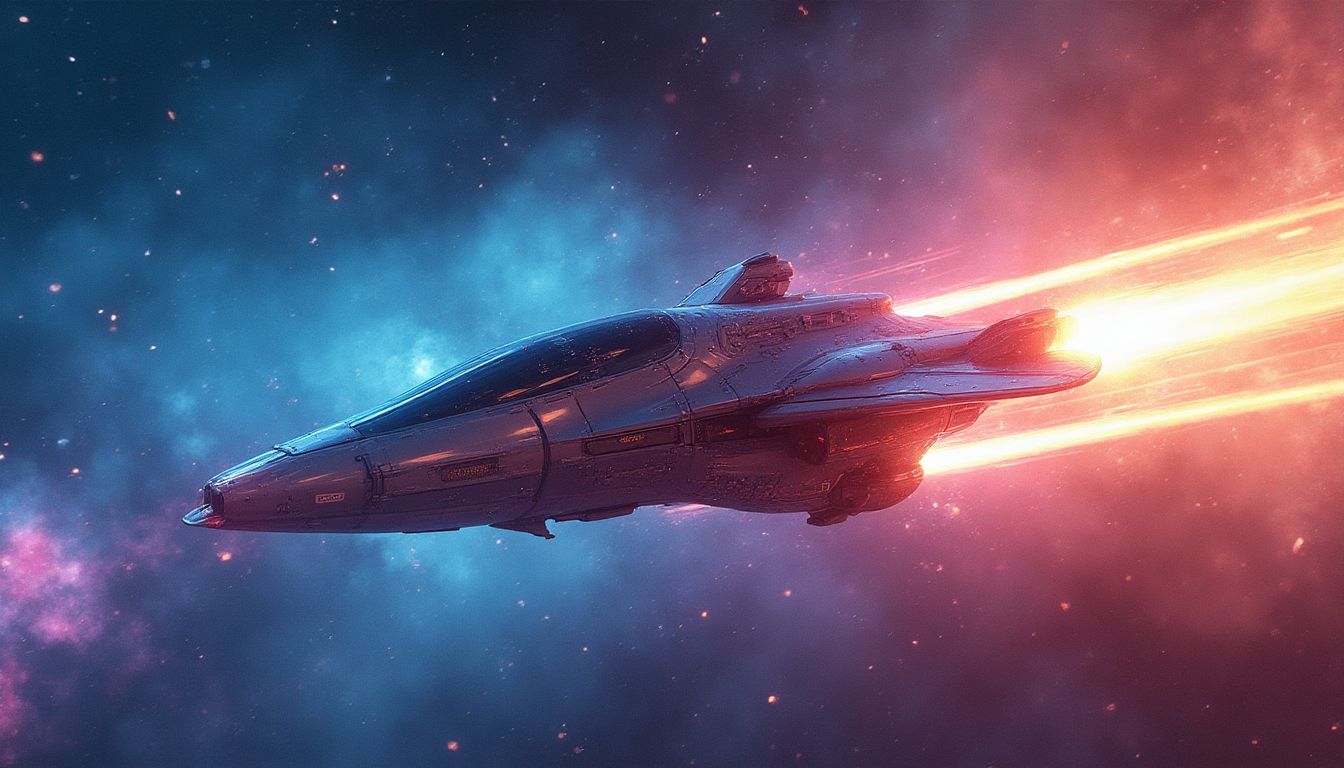

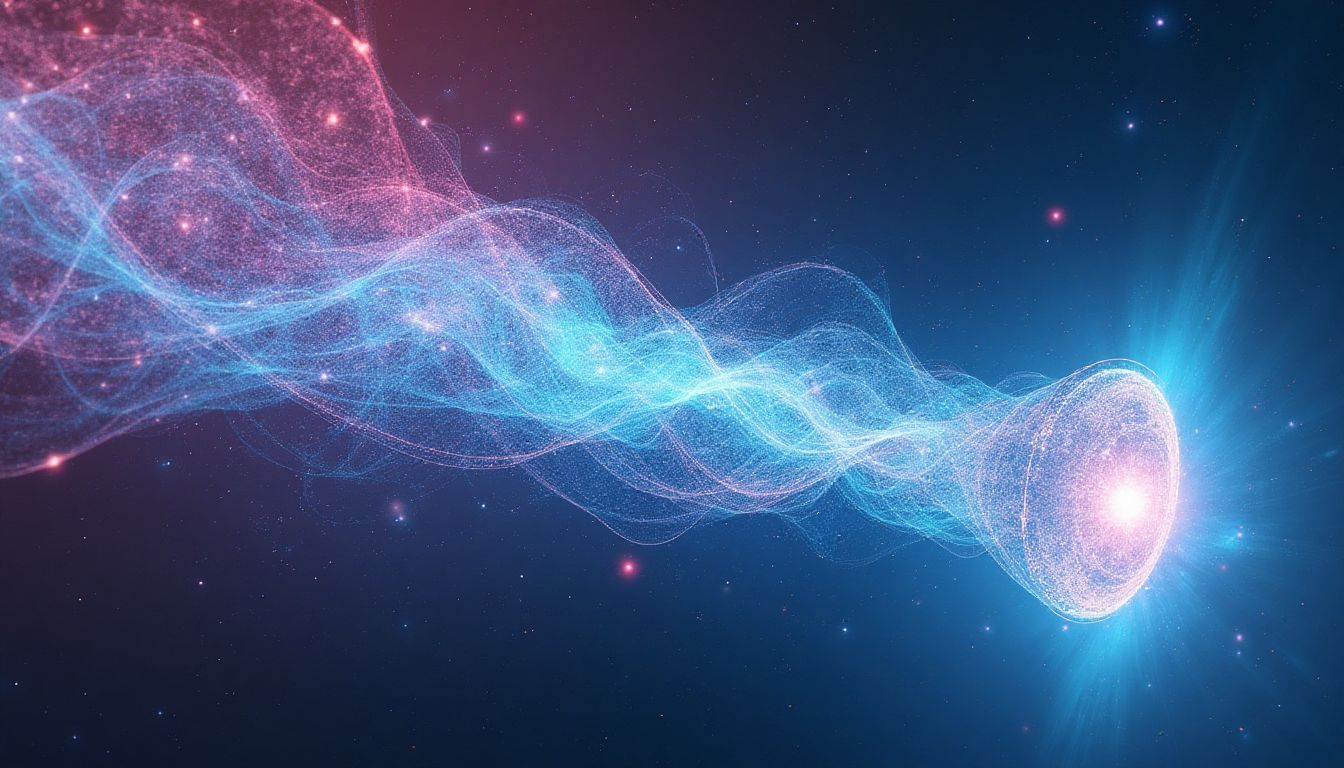
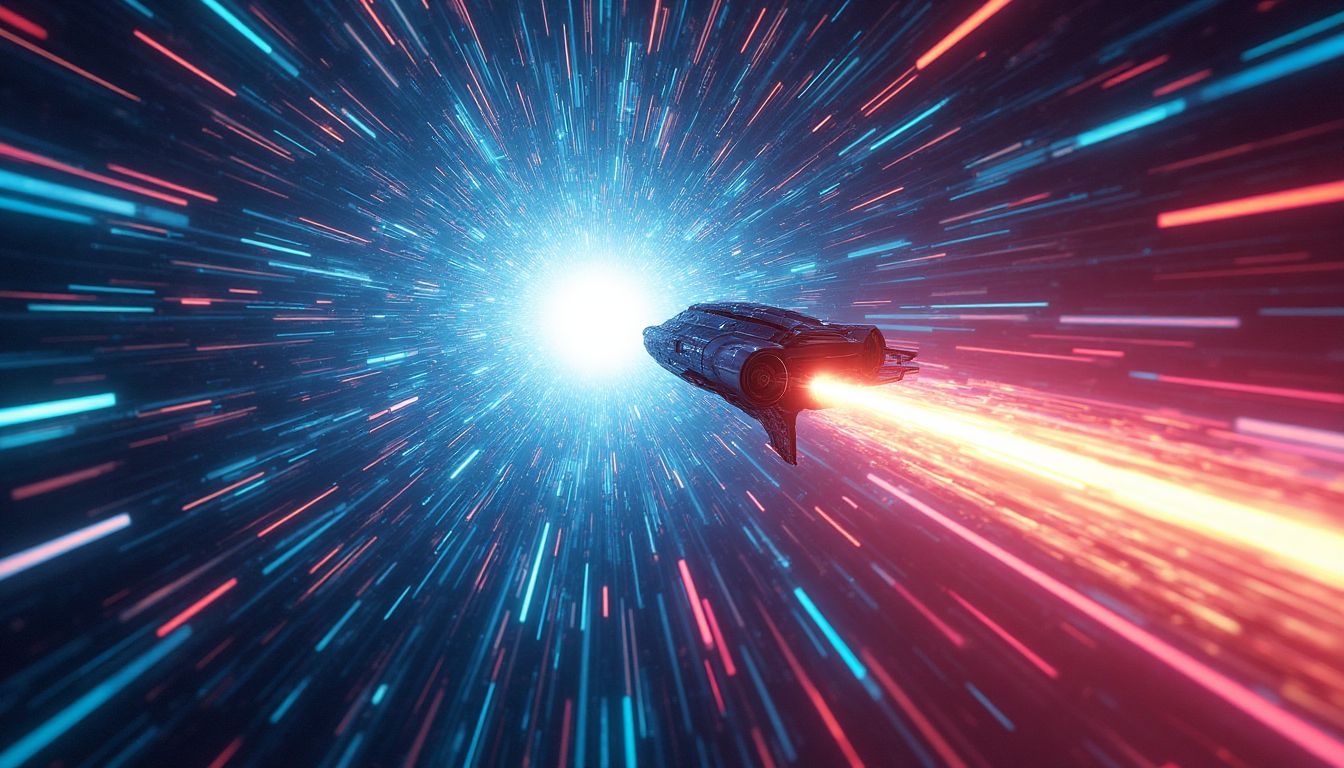






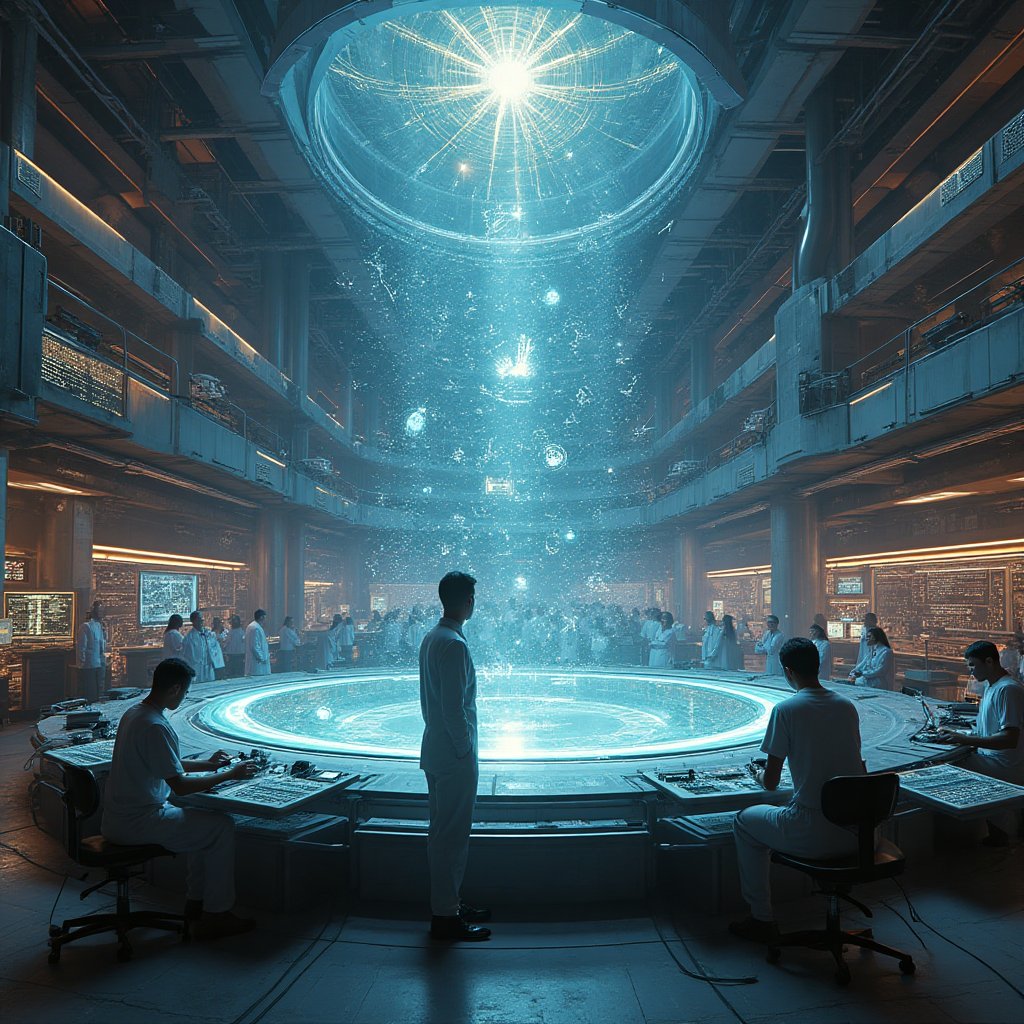

















Post Comment
You must be logged in to post a comment.